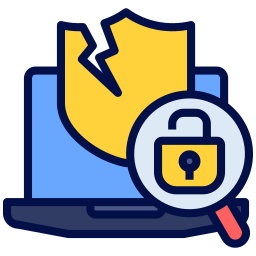
California Department of Motor Vehicles Company Cyber Security Posture
ca.govThe California Department of Motor Vehicle’s vision is to be a recognized leader in public service. To accomplish this vision our mission is to serve the public by providing quality licensing and motor vehicle-related services. The two functions of the DMV that most people are familiar with are registering vehicles and licensing their drivers. There are approximately 33 million registered vehicles in California with 23 million licensed drivers.
CDMV Company Details
cadmv
1846 employees
9623.0
922
Government Administration
ca.gov
Scan still pending
CAL_3449306
In-progress
Between 900 and 1000
This score is AI-generated and less favored by cyber insurers, who prefer the TPRM score.
 CDMV Global Score
CDMV Global Score.png)

California Department of Motor Vehicles Company Scoring based on AI Models
| Model Name | Date | Description | Current Score Difference | Score |
|---|---|---|---|---|
| AVERAGE-Industry | 03-12-2025 | This score represents the average cybersecurity rating of companies already scanned within the same industry. It provides a benchmark to compare an individual company's security posture against its industry peers. | N/A | Between 900 and 1000 |
California Department of Motor Vehicles Company Cyber Security News & History
| Entity | Type | Severity | Impact | Seen | Url ID | Details | View |
|---|---|---|---|---|---|---|---|
| Department of Motor Vehicles | Breach | 50 | 2 | 9/2015 | CAD846072525 | Link | |
Rankiteo Explanation : Attack limited on finance or reputationDescription: The California Department of Motor Vehicles (CA DMV) reported a data breach on November 6, 2015, involving an erroneous disclosure of personal information on September 28, 2015. The breach affected the Riverside Probation Department and involved the accidental transmission of names, dates of birth, physical descriptions, and driver license numbers, but did not include Social Security Numbers. | |||||||
| California Department of Motor Vehicles | Data Leak | 50 | 2 | 11/2019 | CAL9230423 | Link | |
Rankiteo Explanation : Attack limited on finance or reputationDescription: Seven government agencies now have access to some drivers' Social Security numbers thanks to a data breach at the California Department of Motor Vehicles. According to the organisation, the breach had an impact on 3,200 people for at least the previous four years. The DMV says that it was not hacked and that no private persons or organisations received the information. According to the DMV, steps were taken right away to fix the access issue and make sure that no further private information was leaked. | |||||||
California Department of Motor Vehicles Company Subsidiaries

The California Department of Motor Vehicle’s vision is to be a recognized leader in public service. To accomplish this vision our mission is to serve the public by providing quality licensing and motor vehicle-related services. The two functions of the DMV that most people are familiar with are registering vehicles and licensing their drivers. There are approximately 33 million registered vehicles in California with 23 million licensed drivers.
Access Data Using Our API

Get company history
.png)
CDMV Cyber Security News
California DMV partners with biometric identity company for mobile driver’s license program
The biometric tech will allow California residents to confirm their identities online through face matching and liveness detection.
CIO Academy Recognizes Leaders, IT Teams
The annual conference focusing on government technology in the state, recognizes IT leaders and tech professionals for achievements aimed at making government ...
California DMV puts 42 million car titles on blockchain to fight fraud
California's Department of Motor Vehicles (DMV) has digitized 42 million car titles using blockchain technology in a bid to detect fraud and smoothen the title ...
CA outage impacts: Gov. Newsom says no impacts to 'life-safety' services, Social Security offices close
California IT outage impacts: Gov. Newsom says no impacts to 'life-safety' services, Social Security offices close, DMV offers 'limited services ...
California ‘Digital’ Driver’s Licenses Pose Identity Theft Risks, Experts Say
Cybersecurity experts are warning about potential security and privacy risks associated with California's new digital driver's license.
Data Breach at California DMV Affects 3,200 Drivers’ Information
Information of thousands of drivers has been exposed in a data breach at the California Department of Motor Vehicles (DMV) that went unnoticed.
California drivers can get mobile licenses on their iPhones — but they need physical ones too
Californians can now add digital IDs and driver's licenses to their iPhones or Android devices. Support for the digital cards is limited, however.
California DMV accuses Tesla of deceptive practices in marketing Autopilot and Full Self-Driving options
The California Department of Motor Vehicles has accused Tesla of engaging in deceptive practices around the marketing of its driver assistance ...
LIST: Massive IT outage impacts multiple San Diego agencies & services
Friday's massive IT outage impacted businesses across globe, including multiple San Diego government entities and hospitals.

CDMV Similar Companies

Correios
Empresa Brasileira de Correios e Telégrafos foi criada como empresa em 1969 por decreto lei. Hoje conta com mais de 100.000 empregados, tem presença em todos os municípios do Brasil. NEGÓCIO: Soluções que aproximam. MISSÃO: Fornecer soluções acessíveis e confiáveis para conectar pessoas, institu

France Travail
France Travail est un acteur majeur du marché de l’emploi en France où il s’investit pour faciliter le retour à l’emploi des demandeurs d’emploi et offrir aux entreprises des réponses adaptées à leurs besoins de recrutement. Les 55 000 collaborateurs de France Travail œuvrent au quotidien pour êtr

Prefeitura Municipal de Campinas
Prefeitura Municipal de Campinas - www.campinas.sp.gov.br Campinas City Hall (Brasil) Situada no coração de São Paulo, o estado mais desenvolvido do Brasil, Campinas vive o seu melhor momento em décadas, tanto no campo econômico quanto no social. A cidade nunca esteve tão preparada para receber

European Commission
The Commission represents and upholds the interests of the EU as a whole, and is independent of national governments. The European Commission prepares legislation for adoption by the Council (representing the member countries) and the Parliament (representing the citizens). It administers the budge

Selangor State Government
Selangor also known by its Arabic honorific, Darul Ehsan, or "Abode of Sincerity" is one of the 13 states of Malaysia. It surrounds the federal territories of Kuala Lumpur and Putrajaya, both of which were once under Selangor's territorial sovereignty. The state of Selangor has the largest econom

City of Framingham
OVERVIEW Framingham was incorporated as a town on June 25, 1700. Chapter 143 of the Acts of 1949 established the Town of Framingham Representative Town Government by Limited Town Meetings. The Citizens of Framingham adopted the Home Rule Charter for the City of Framingham at an election held on Ap

Frequently Asked Questions
Explore insights on cybersecurity incidents, risk posture, and Rankiteo's assessments.
CDMV CyberSecurity History Information
How many cyber incidents has CDMV faced?
Total Incidents: According to Rankiteo, CDMV has faced 2 incidents in the past.
What types of cybersecurity incidents have occurred at CDMV?
Incident Types: The types of cybersecurity incidents that have occurred incidents Breach and Data Leak.
How does CDMV detect and respond to cybersecurity incidents?
Detection and Response: The company detects and responds to cybersecurity incidents through containment measures with Steps were taken right away to fix the access issue.
Incident Details
Can you provide details on each incident?

Incident : Data Breach
Title: CA DMV Data Breach
Description: The California Department of Motor Vehicles (CA DMV) reported a data breach on November 6, 2015, involving an erroneous disclosure of personal information on September 28, 2015. The breach affected the Riverside Probation Department and involved the accidental transmission of names, dates of birth, physical descriptions, and driver license numbers, but did not include Social Security Numbers.
Date Detected: 2015-11-06
Date Publicly Disclosed: 2015-11-06
Type: Data Breach
Attack Vector: Erroneous Disclosure

Incident : Data Breach
Title: California DMV Data Breach
Description: Seven government agencies now have access to some drivers' Social Security numbers thanks to a data breach at the California Department of Motor Vehicles.
Type: Data Breach
What are the most common types of attacks the company has faced?
Common Attack Types: The most common types of attacks the company has faced is Breach.
Impact of the Incidents
What was the impact of each incident?

Incident : Data Breach CAD846072525
Data Compromised: Names, Dates of Birth, Physical Descriptions, Driver License Numbers

Incident : Data Breach CAL9230423
Data Compromised: Social Security numbers
What types of data are most commonly compromised in incidents?
Commonly Compromised Data Types: The types of data most commonly compromised in incidents are Names, Dates of Birth, Physical Descriptions, Driver License Numbers and Social Security numbers.
Which entities were affected by each incident?

Incident : Data Breach CAD846072525
Entity Type: Government Agency
Industry: Law Enforcement
Location: Riverside, California

Incident : Data Breach CAL9230423
Entity Type: Government Agency
Industry: Government
Location: California, USA
Customers Affected: 3200
Response to the Incidents
What measures were taken in response to each incident?

Incident : Data Breach CAL9230423
Containment Measures: Steps were taken right away to fix the access issue
Data Breach Information
What type of data was compromised in each breach?

Incident : Data Breach CAD846072525
Type of Data Compromised: Names, Dates of Birth, Physical Descriptions, Driver License Numbers
Sensitivity of Data: High
Personally Identifiable Information: True

Incident : Data Breach CAL9230423
Type of Data Compromised: Social Security numbers
Number of Records Exposed: 3200
Sensitivity of Data: High
Personally Identifiable Information: Social Security numbers
How does the company handle incidents involving personally identifiable information (PII)?
Handling of PII Incidents: The company handles incidents involving personally identifiable information (PII) through was Steps were taken right away to fix the access issue.
References
Where can I find more information about each incident?
Where can stakeholders find additional resources on cybersecurity best practices?
Additional Resources: Stakeholders can find additional resources on cybersecurity best practices at and Source: CA DMV Data Breach ReportDate Accessed: 2015-11-06.
Additional Questions
Incident Details
What was the most recent incident detected?
Most Recent Incident Detected: The most recent incident detected was on 2015-11-06.
What was the most recent incident publicly disclosed?
Most Recent Incident Publicly Disclosed: The most recent incident publicly disclosed was on 2015-11-06.
Impact of the Incidents
What was the most significant data compromised in an incident?
Most Significant Data Compromised: The most significant data compromised in an incident were Names, Dates of Birth, Physical Descriptions, Driver License Numbers and Social Security numbers.
Response to the Incidents
What containment measures were taken in the most recent incident?
Containment Measures in Most Recent Incident: The containment measures taken in the most recent incident was Steps were taken right away to fix the access issue.
Data Breach Information
What was the most sensitive data compromised in a breach?
Most Sensitive Data Compromised: The most sensitive data compromised in a breach were Names, Dates of Birth, Physical Descriptions, Driver License Numbers and Social Security numbers.
What was the number of records exposed in the most significant breach?
Number of Records Exposed in Most Significant Breach: The number of records exposed in the most significant breach was 320.0.
References
What is the most recent source of information about an incident?
Most Recent Source: The most recent source of information about an incident is CA DMV Data Breach Report.
What Do We Measure?
















Every week, Rankiteo analyzes billions of signals to give organizations a sharper, faster view of emerging risks. With deeper, more actionable intelligence at their fingertips, security teams can outpace threat actors, respond instantly to Zero-Day attacks, and dramatically shrink their risk exposure window.
These are some of the factors we use to calculate the overall score:
Identify exposed access points, detect misconfigured SSL certificates, and uncover vulnerabilities across the network infrastructure.
Gain visibility into the software components used within an organization to detect vulnerabilities, manage risk, and ensure supply chain security.
Monitor and manage all IT assets and their configurations to ensure accurate, real-time visibility across the company's technology environment.
Leverage real-time insights on active threats, malware campaigns, and emerging vulnerabilities to proactively defend against evolving cyberattacks.




